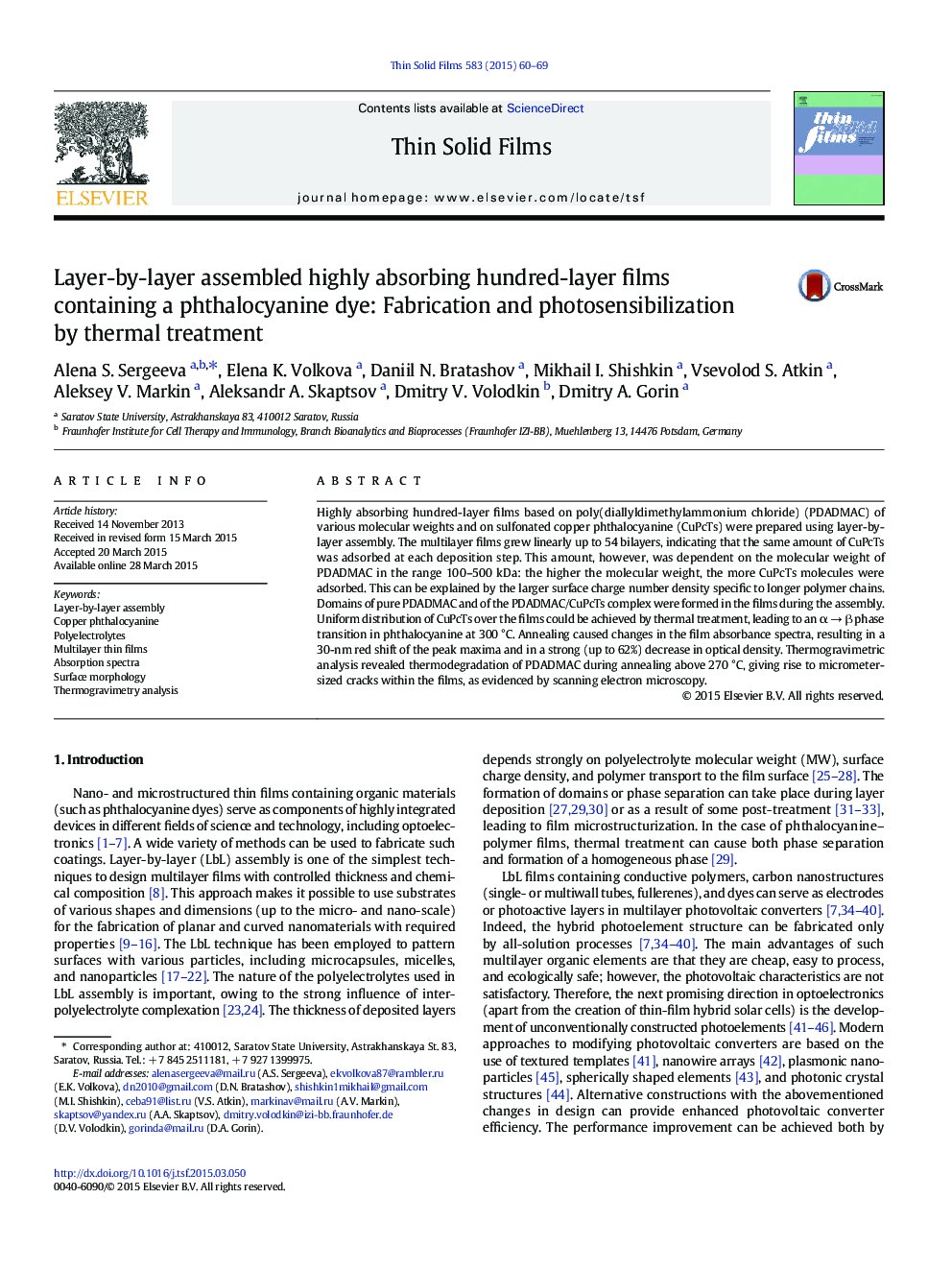| Article ID | Journal | Published Year | Pages | File Type |
|---|---|---|---|---|
| 8034109 | Thin Solid Films | 2015 | 10 Pages |
Abstract
Highly absorbing hundred-layer films based on poly(diallyldimethylammonium chloride) (PDADMAC) of various molecular weights and on sulfonated copper phthalocyanine (CuPcTs) were prepared using layer-by-layer assembly. The multilayer films grew linearly up to 54 bilayers, indicating that the same amount of CuPcTs was adsorbed at each deposition step. This amount, however, was dependent on the molecular weight of PDADMAC in the range 100-500 kDa: the higher the molecular weight, the more CuPcTs molecules were adsorbed. This can be explained by the larger surface charge number density specific to longer polymer chains. Domains of pure PDADMAC and of the PDADMAC/CuPcTs complex were formed in the films during the assembly. Uniform distribution of CuPcTs over the films could be achieved by thermal treatment, leading to an α â β phase transition in phthalocyanine at 300 °C. Annealing caused changes in the film absorbance spectra, resulting in a 30-nm red shift of the peak maxima and in a strong (up to 62%) decrease in optical density. Thermogravimetric analysis revealed thermodegradation of PDADMAC during annealing above 270 °C, giving rise to micrometer-sized cracks within the films, as evidenced by scanning electron microscopy.
Keywords
Related Topics
Physical Sciences and Engineering
Materials Science
Nanotechnology
Authors
Alena S. Sergeeva, Elena K. Volkova, Daniil N. Bratashov, Mikhail I. Shishkin, Vsevolod S. Atkin, Aleksey V. Markin, Aleksandr A. Skaptsov, Dmitry V. Volodkin, Dmitry A. Gorin,
